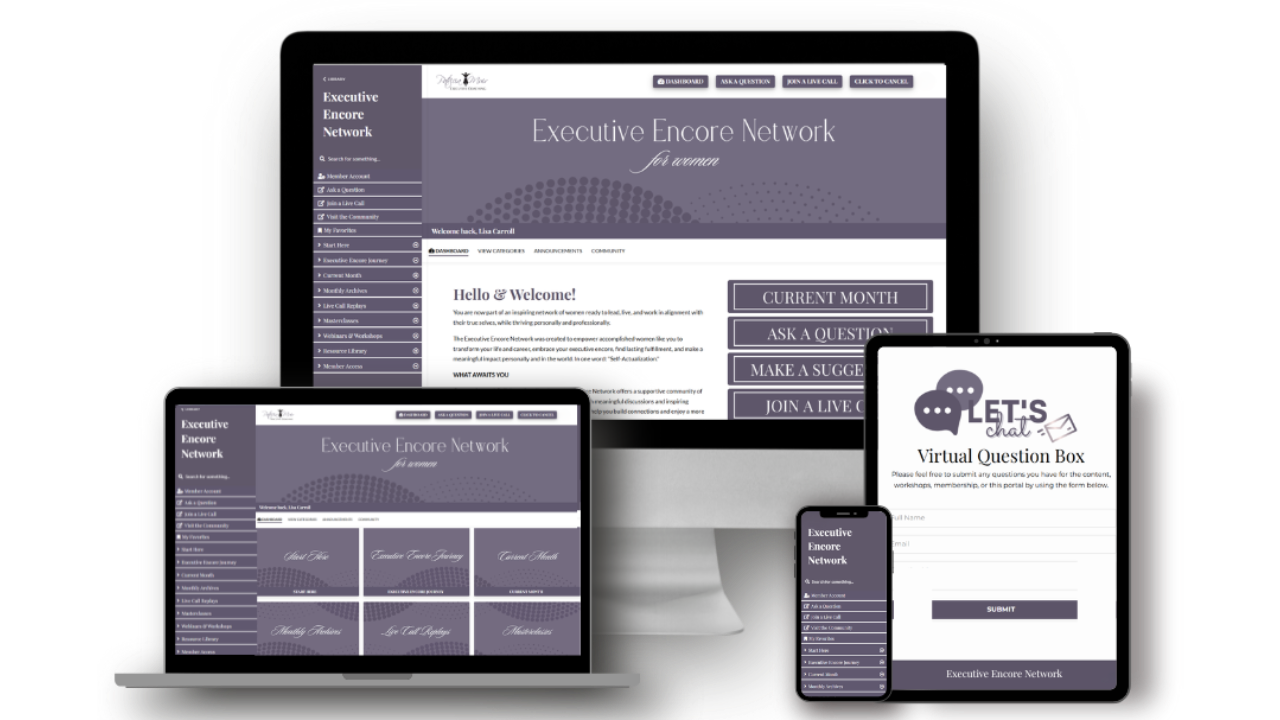
Managing Effective Change to Experience Transformation in 2021
Jan 13, 2021“Faced with the choice between changing one’s mind and proving that there is no need to do so, almost everybody gets busy on the proof.” – John Kenneth Galbraith
As we closed out 2020 with some sense of release and relief, many of us welcomed 2021 with quiet reflection and a sense of realistic hope and optimism. Many of us used the time for the deep process of planning...planning for change...planning for some level of effective change with hope of transformation.
Effective change 2.0
Achieving effective change in today’s economy, unstable shifting of the business climate, and heightened social conscience is very challenging. Current conditions demand that businesses change or die, social systems transform or crumble, and individuals adapt or remain stuck in survival mode. Unfortunately, we are seeing the effects of ineffective change now that touches every fabric of our lives, our businesses, and our communities.
Even prior to the pandemic, few businesses managed transformations as well as their owners and employees would like. Fifty to eighty percent of all change initiatives within businesses failed. Few individuals followed through with transformation (aka New Year’s Resolution initiatives). At the end of 2019, according to U.S. News & World Report, 80% of New Year’s Resolutions failed. A massive failure rate that perpetuates more advice on new approaches and new theories every year.
Reflect on what you wanted to change in 2020. If change did not go as well as you had planned in 2020, you are not alone. In fact, you are in very good company. Change was forced upon us! AND, in a way that many of us did not see coming. We were blind-sided!
Change Initiatives and Survival Pressures. Between 1980 and 1995, researchers at the Harvard Business School tracked the impact of change efforts among Fortune 100 companies. Only 30 percent of those change initiatives produced an improvement in bottom-line results. Each company invested $1 billion in change programs over the 15-year period. WOW! That's a big investment with dismal results and return.
For years, I witnessed business owners struggle with creating a better workplace, good profits, and true growth by introducing improvements into every function and process. Competitive pressures now take a back seat to survival pressures. While business owners MUST continually search for higher levels of quality and service, they are now focussed on overall business agility that requires effective change that results in transformation.
Inspiring Effective Change to Experience Transformation. Few people really support change with their hearts and minds. To foster proactive effort and inspire creative thinking, business owners must engage more people and engage them more fully. Transformation in the current business and social climate is calling for business owners to lead in a different way. The tone at the top (beyond ethics and compliance) is crucial to inspiring positive emotion toward change and unified engagement. See Blog Post : Leadership and Inspiring Positive Emotions
Change is intensely personal. Effective change is transformational. For change to occur in any organization or entity (businesses, associations, families, Self), we must think, feel, or do something different. In order for change to be transformational, we need to understand our plans and our strategies well enough to translate them into appropriate actions that inspire others to support the change with their hearts and minds.
Where do we falter? In business, we have been reluctant to move away from applying mechanistic models that were first used in scientific management under the legacy of one of the first management consultants, Frederick Winslow Taylor. These principles were first applied to managing physical work in manufacturing plants in late 1800s and early 1900s. When superimposed on the new model of today’s knowledge work in the 21st Century, change initiatives continue to be broken into pieces and then the pieces are managed. But today, change is dynamic, and the pieces are constantly in motion. The challenge is to innovate mental work – not to replicate physical work.
In our personal lives, we tend to unconsciously follow the same mechanistic models. Plan, action, do! Find the next shiny productivity app. Again, the pieces of our plans are broken down to the point that if any actionable part falters, our whole plan is jeopardized.
We need a different and holistic approach to change and transformation.
How will you innovate mental work and manage dynamic change personally and professionally in 2021? What new models or systems do you need to explore? What expert resources do you need? How will you lead in this new paradigm?
If you are curious about navigating personal transformation from a holistic approach, watch my recent interview with Dr. Sirena Pellarolo on YouTube.
Effective change for transformation is not a DIY project. Let’s start the conversation about effective change and transformation for your business and for you personally - with less stress for everyone. Let’s work together to implement effective change that contributes to a better workplace, good profits, and true growth even when change is forced upon you by compliance and legislation…or when change continues to blind-side you.
I work with women business owners to thrive in work and life by validating their choices and utilizing their competencies while adapting their behaviour in situations that require a different approach. Key tools and resources for leading dynamic change and transformation in work and life include: TRACTION (EOS Model), the Net Promoter System, and Emotional Intelligence.
Contact me at [email protected], at 416-804-4383, on LinkedIn and Maestro’s Facebook.
Next Steps
You don’t need to navigate your Executive Encore alone. Discover a better way to take charge of your experience.
- Schedule a 30-Minute Complimentary Executive Encore Call.
Ready to elevate your encore chapter?
- Join the Executive Encore Network for Women, a membership and community of supportive women ready to inspire and uplift. Subscribe to the Sunday Encore to begin your Executive Encore Journey and register for the next Tour to learn more.


